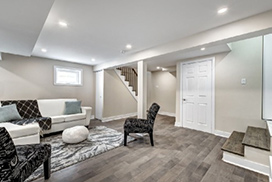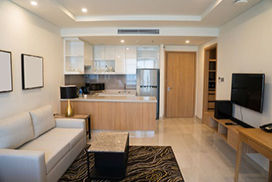About Second Suites




“… second units are an important tool in contributing to the supply of private sector affordable housing choices. They are widely recognized as one of the most affordable forms of rental housing. Second units help optimize the use of the existing housing stock and infrastructure, all the while providing an income stream for homeowners, particularly younger and older homeowners, who may respectively have a greater need for income to help finance and/or remain in their homes.”
~ The Honourable Chris Ballard, Former Minister of Housing
What are Second Suites?
Second Suites are self-contained residential units which have a private kitchen, bathroom facilities, sleeping areas and a separate entrance. They are also known as secondary units, accessory units, basement apartments and/or in-law suites. Second Suites are considered affordable housing because the rent tends to be 10 to 15% less than rent charged for traditional multi-unit residential rental properties. They are generally allowed in single detached, semi-detached and row houses as well as in ancillary structures. Second Suites are often found in communities, close to shopping, schools and transit. Second Suites are a vital component of Ontario’s rental housing landscape. They represent an estimated 38% of rental housing stock in the Greater Toronto Area and 32% across the province. The number of Second Suites in the city of Toronto is estimated to be between 74,988 and 102,263.
Second Suites have been embraced by the province of Ontario as a strategy to create new affordable rental housing opportunities that benefit both homeowners and the community. However, local municipalities are responsible for developing, managing and enforcing their own policies regarding Second Suites. These policies include regulating residential zoning bylaws, the process for submitting plans and obtaining approvals for a Second Suite. As a result, a patchwork of regulations has been created across the province with rules and procedures differing from one municipality to another. In addition, there continue to be many municipalities which have yet to adopt a Second Suite policy.
What is the Legality of Second Suites in Ontario?
Second Suites are a common form of rental housing. They are also known as secondary units, accessory units, laneway houses, basement apartments or in-law suites. Second Suites are found in municipalities across Ontario. Some municipalities allowed them as of right while others made allowances subject to zoning by-law amendments or minor variances.
Some suites were created during the short-lived legislation called the Residents Rights Act, 1994. This Act allowed homeowners province-wide the right to create a Second Suite rental unit in detached,
semi-detached, row houses and in ancillary structures, subject to prescribed planning standards. Although the legislation was cancelled on May 22, 1996, Second Suites created in accordance with the Act became grandparented and were allowed as long as they complied with health, safety, housing and maintenance standards. Second Suites may have been allowed under previous legislation and homeowners are encouraged to consult with their municipality to determine what rules may have governed in the past and what may be grandparented.
Act to Create Secondary Units Province-wide
Planning Act amendments came into force on January 1, 2012 and help with the creation of Second Suites by requiring Ontario municipalities to:
Establish official plan policies and zoning bylaw provisions allowing Second Suites in detached, semi-detached and row houses, as well as in ancillary structures.
The amendments also:
Provide the Minister of Housing the authority to make regulations authorizing the use of and prescribing standards for Second Suites.
In 2016, the Province released an update to the Long-Term Affordable Housing Strategy with the introduction of the Promoting Affordable Housing Act, 2016 which amends the Development Charges Act, 1997 and gives the authority to amend regulations and exempt second units in new homes from development charges. There are also plans to hold a public consultation on potential changed to the Building Code “to improve the affordability of second units in newly constructed houses while still meeting safety standards of both the Building Code and Fire Code”.
The Residential Tenancies Act and Second Suites?
The Residential Tenancies Act provides protection for residential tenants from unlawful rent increases and unlawful evictions; establishes a framework for the regulation of residential rents; balances the rights and responsibilities of residential landlords and tenants; and provides for adjudication and other processes to informally resolve disputes.
The RTA establishes the rules for all aspects of the residential rental relationship, including rules related to:
- Rents (and rent deposits)
- Sublets and assignments
- Tenancy agreements
- Responsibilities of landlords
- Responsibilities of tenants
- Security of tenures
- Terminating tenancies

